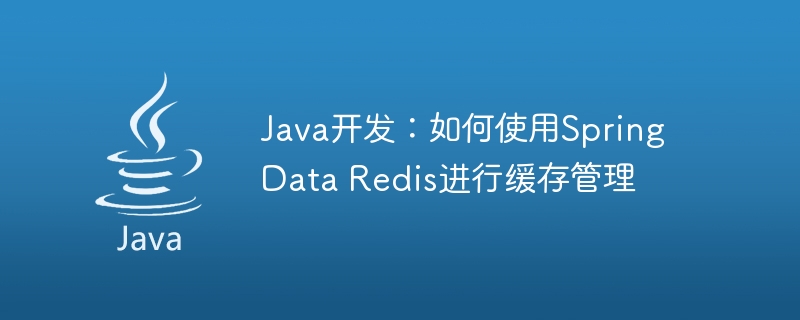

Java development: How to use Spring Data Redis for cache management
Introduction:
In modern web applications, caching is an important way to improve system performance and response speed one of the important means. Spring Data Redis provides a way to simplify cache management and can be seamlessly integrated with the Redis database, providing developers with a fast and reliable cache solution. This article will introduce how to use Spring Data Redis for cache management and provide detailed code examples.
<dependencies>
<!-- Spring Data Redis -->
<dependency>
<groupId>org.springframework.boot</groupId>
<artifactId>spring-boot-starter-data-redis</artifactId>
</dependency>
</dependencies>spring.redis.host=127.0.0.1 spring.redis.port=6379 spring.redis.password=
UserCacheManager to manage the cache of user information: @Component
@CacheConfig(cacheNames = "users")
public class UserCacheManager {
@Autowired
private UserRepository userRepository;
@Cacheable(key = "#userId")
public User getUserById(String userId) {
return userRepository.findById(userId).orElse(null);
}
@CachePut(key = "#user.id")
public User saveUser(User user) {
return userRepository.save(user);
}
@CacheEvict(key = "#userId")
public void deleteUser(String userId) {
userRepository.deleteById(userId);
}
}In the above example, the @CacheConfig annotation specifies The name of the cache is users, @Cacheable, @CachePut and @CacheEvict are used to obtain, save and delete user information respectively. And perform cache operations based on the specified key value.
UserCacheManager class where the cache needs to be used, and call the corresponding method to achieve cache management. For example, in a scenario where user information needs to be obtained in a certain service class, you can call it like this: @Service
public class UserService {
@Autowired
private UserCacheManager userCacheManager;
public User getUserById(String userId) {
return userCacheManager.getUserById(userId);
}
public User saveUser(User user) {
return userCacheManager.saveUser(user);
}
public void deleteUser(String userId) {
userCacheManager.deleteUser(userId);
}
}In the above example, we directly call UserCacheManager in the class Methods to obtain, save and delete user information, Spring Data Redis will automatically manage the cache.
Summary:
Using Spring Data Redis for cache management can greatly improve the performance and response speed of the system. In this article, we introduce how to use Spring Data Redis for cache management and provide detailed code examples. I hope this article can help Java developers better understand and apply Spring Data Redis, thereby improving application performance and user experience.
The above is the detailed content of Java development: How to use Spring Data Redis for cache management. For more information, please follow other related articles on the PHP Chinese website!
